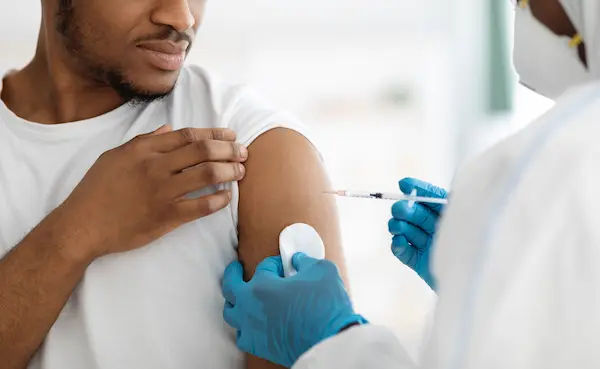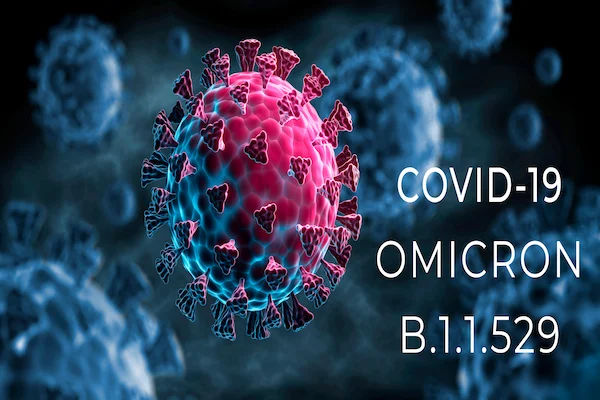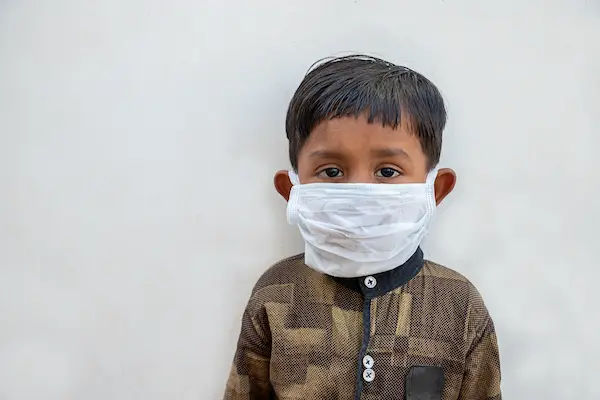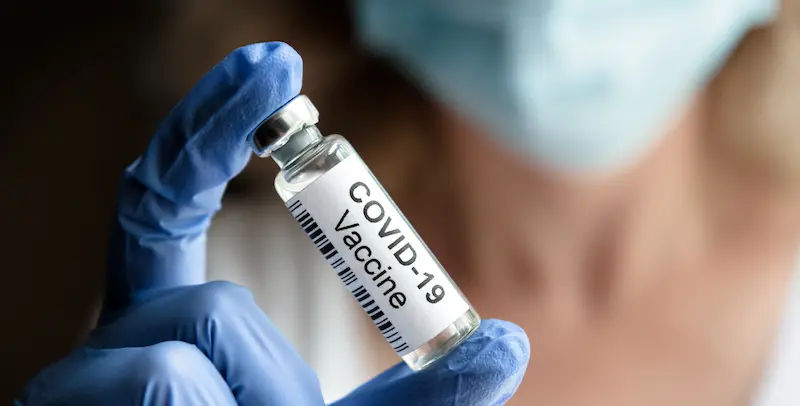Why COVID-19 Cases Are Rising Despite Vaccination - Expert Insights
Why covid cases rise despite vaccination. Learn the vaccination impact, reasons for surges, and practical steps to stay protected, from trusted health sources.

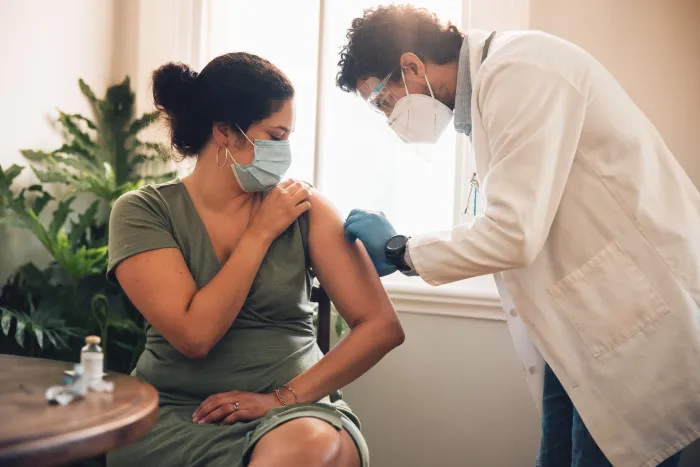
Introduction: Why This Topic Matters Right Now
COVID-19 remains a part of everyday life, and many people understandably wonder why cases can still rise despite widespread vaccination. With millions vaccinated and boosted, it may seem counterintuitive when numbers climb again. In reality, vaccines continue to work very effectively particularly when it comes to preventing severe illness but several predictable and well-understood factors can still drive new infections. By understanding how vaccination impacts the course of the virus, you can make calm, informed decisions to protect yourself, your loved ones, and your wider community.Consult a Top General Practitioner for Personalised Advice
Quick Recap on What Vaccination Impact Really Means
COVID-19 vaccines were developed primarily to protect people from severe illness, hospitalisation, and death. That remains their strongest benefit. They also provide some protection against infection and transmission, especially within the first few months after receiving a dose. However, immunity against catching the virus naturally declines over time, and the virus continues to evolve, which changes the landscape of protection. This is why public health authorities advise people to stay up to date with the latest seasonal vaccine.
Key points:
- Vaccination lowers the risk of severe disease and death.
- Vaccination can reduce infections and transmission, but this protection wanes.
- Updated vaccines restore protection against circulating variants.
- Layered precautions such as good ventilation and high-quality masks add extra protection.
Why COVID Cases Rise Even with Vaccines: The Main Drivers
The main reasons include:
More Contagious, Evolving Variants
The virus has not remained static. It continues to change, producing new variants that spread more easily than earlier ones. Variants such as Omicron and its subvariants have demonstrated a stronger ability to evade some of the immune protection developed from previous vaccination or infection. Although vaccines still offer powerful defence against severe outcomes, a variant with higher transmissibility inevitably creates more opportunities for the virus to move through communities. This increased spread does not mean vaccines have failed; rather, it demonstrates how quickly a highly contagious virus can circulate, even when many people have some level of immunity.
Waning Immunity Over Time
Immunity, whether gained through vaccination, natural infection, or a combination, does not remain at the same strength indefinitely. Protection against infection fades more noticeably than protection against severe disease, which tends to remain more stable. Over time, this gradual reduction makes it easier for the virus to infect someone again, particularly if they have not had a recent vaccine dose. Updated vaccines are designed to restore and strengthen protection by targeting the variants currently circulating.
Behaviour, Seasonality, and Indoor Air
Human behaviour plays an important role in driving infection rates. When people spend more time indoors—during winter months, around holidays, or in crowded or poorly ventilated places—COVID-19 spreads more easily. The virus travels through tiny airborne particles, making enclosed spaces with limited airflow especially risky. Even if individuals are vaccinated, spending long periods in crowded indoor environments increases the chance of transmission. Seasonal factors also contribute, as colder weather leads people to gather inside more frequently, providing the virus with more opportunities to spread.
Uneven Vaccine and Booster Uptake
Vaccination coverage is not evenly distributed across all age groups, communities, or regions. Some people may choose not to get vaccinated or boosted, while others face difficulties accessing vaccines due to health, mobility, or socioeconomic barriers. People at higher risk of serious illness, including older adults, immunocompromised individuals, pregnant people, and those with chronic health conditions, benefit greatly from updated vaccines but may not always receive them. When parts of a community have lower vaccination levels, the virus finds more potential hosts, which can lead to rises in infections.
Reinfections Are Possible
Because the virus changes over time and immunity fades, reinfections can and do occur. Even if a person has been previously infected or vaccinated, they may still catch COVID-19 again. However, immunity built through vaccination or past infection usually results in a milder illness during subsequent infections. This does not guarantee complete protection from being infected again, but it does mean the body is better prepared to respond, reducing the likelihood of severe outcomes.
Shifts in Testing and Reporting
Testing habits have changed significantly since the early stages of the pandemic. Many people rely on at-home rapid tests, which are convenient but may not be reported to health authorities. Others may choose not to test at all, especially if they experience only mild symptoms. As a result, official case counts often underestimate the actual number of infections. Today, hospitalisation rates and wastewater surveillance provide more consistent indicators of community spread. When these indicators rise, it typically reflects a genuine increase in transmission, even if reported case numbers look lower than in previous years.
What the Evidence Shows About Vaccination Impact Today?
The vaccination impact evidence includes:
- Strong protection where it matters most: Vaccines continue to provide robust protection against severe illness, hospitalisation, and death, even with newer variants.
- Protection against infection is real but time-limited: After receiving a dose, protection against infection and transmission rises but declines over several months.
- Lower viral load and shorter illness: Vaccinated individuals often experience milder illness and may shed the virus for a shorter period, potentially reducing the chance of spreading it.
- Possible reduction in post-COVID complications: Vaccination may lower the risk of long-lasting symptoms after infection, although it does not eliminate the possibility entirely.
What to Do When COVID Cases Rise in Your Area?
You do not need to make drastic changes when cases increase. Instead, small and manageable adjustments can significantly reduce risk while still allowing you to continue daily activities. Follow the guidelines below:
Stay Up to Date on Vaccines
- Follow public health guidance on the latest recommended vaccine.
- Most people aged six months and older should receive updated vaccines each season.
- Individuals at higher risk, including older adults, pregnant people, and immunocompromised individuals, should consult their healthcare provider about timing and additional doses.
Use Smart Layers of Protection
- Improve indoor air by opening windows, using HEPA air purifiers, or maintaining HVAC systems.
- Wear a well-fitted, high-quality mask in crowded or poorly ventilated indoor environments.
- Test if you develop symptoms, have had a known exposure, or plan to visit someone at high risk.
- Repeat testing after 24–48 hours if the first rapid test is negative, as accuracy improves with multiple tests.
- Stay home when unwell to protect others and return to normal activities when symptoms have improved and you are fever-free.
- Seek antiviral treatment promptly if you are at higher risk of severe illness and test positive.
Protect Those at Higher Risk
- Ensure vaccinations and boosters are up to date.
- Consider using masks or rapid tests before visiting vulnerable individuals.
- Choose outdoor or well-ventilated spaces for gatherings whenever possible.
How to Read the Trends Without Stress?
Monitoring COVID trends does not need to be overwhelming. A calm, informed approach helps you understand what is happening around you without unnecessary worry. It includes:
- Look at hospitalisation figures and wastewater surveillance, as they provide a more reliable picture than case counts.
- Consider the local context, such as outbreaks in schools, workplaces, or care homes.
- Adjust your precautions during surges by improving ventilation, masking in crowded indoor areas, or avoiding high-density events.
- Reduce precautions when indicators show improvement, allowing you to maintain balance and comfort.
Conclusion
COVID-19 continues to evolve, and rising cases do not mean vaccines are failing; they reflect a combination of human behaviour, seasonal patterns, waning immunity, and new variants. Vaccines remain highly effective at protecting against severe outcomes and still contribute meaningfully to reducing transmission. By taking simple, practical steps such as improving ventilation, masking when appropriate, testing wisely, and staying up to date with vaccines you can navigate fluctuations in cases with confidence. A balanced, informed approach allows you to protect yourself and others while maintaining normal routines. Paying attention to local trends and adjusting your precautions when needed offers a sustainable way to live with the virus responsibly.Consult a Top General Practitioner for Personalised Advice
Consult a Top General Practitioner for Personalised Advice

Dr. Mainak Baksi
General Practitioner
13 Years • MBBS , MD (MPH)
Howrah
Mainak Baksi Clinic, Howrah
(50+ Patients)

Dr. Rajib Ghose
General Physician/ Internal Medicine Specialist
25 Years • MBBS
East Midnapore
VIVEKANANDA SEBA SADAN, East Midnapore

Dr Suseela
General Physician
5 Years • MBBS
Bengaluru
Apollo Medical Center, Marathahalli, Bengaluru

Dr. Reema Debnath
General Practitioner
4 Years • MBBS
Bangalore
Apollo Clinic Bellandur, Bangalore

Dr. Sougata Kumar
General Practitioner
8 Years • MBBS
East Midnapore
VIVEKANANDA SEBA SADAN, East Midnapore
Consult a Top General Practitioner for Personalised Advice

Dr. Mainak Baksi
General Practitioner
13 Years • MBBS , MD (MPH)
Howrah
Mainak Baksi Clinic, Howrah
(50+ Patients)

Dr. Rajib Ghose
General Physician/ Internal Medicine Specialist
25 Years • MBBS
East Midnapore
VIVEKANANDA SEBA SADAN, East Midnapore

Dr Suseela
General Physician
5 Years • MBBS
Bengaluru
Apollo Medical Center, Marathahalli, Bengaluru

Dr. Reema Debnath
General Practitioner
4 Years • MBBS
Bangalore
Apollo Clinic Bellandur, Bangalore

Dr. Sougata Kumar
General Practitioner
8 Years • MBBS
East Midnapore
VIVEKANANDA SEBA SADAN, East Midnapore
More articles from Covid
Frequently Asked Questions
Q1: If vaccines work, why are COVID cases rising?
Vaccines are very effective at preventing severe illness, but protection against infection gradually decreases. Highly contagious variants, seasonal indoor gatherings, inconsistent booster uptake, and waning immunity all contribute to rising infections. Vaccination still reduces the risk of severe illness and helps lessen overall spread, especially when supported by other practical measures.
Q2: Do I still need an updated vaccine if I have had COVID-19 recently?
Yes. Staying up to date is advised even after recovering from COVID-19. Natural infection provides protection, but immunity fades and may not match newer variants closely. Your healthcare provider can advise on the best timing for your next dose.
Q3: Can vaccinated people spread COVID-19?
Yes, breakthrough infections can happen, and vaccinated individuals can transmit the virus. However, vaccination lowers the likelihood of infection and may shorten the duration of illness, reducing the overall chance and period of infectiousness.
Q4: What should I do when COVID cases rise in my community?
Refresh your protective layers: receive the recommended vaccine dose, improve indoor ventilation, consider wearing a high-quality mask in crowded areas, test when symptomatic or after exposure, and stay home when ill. If you are at higher risk, speak to a clinician about additional protection or treatments.
Q5: Are updated COVID-19 vaccines safe?
Yes. COVID-19 vaccines used across many countries undergo rigorous testing and constant safety monitoring. Most side effects are mild and short-lived, such as fatigue, low-grade fever, or a sore arm. Serious side effects are rare. Speak with a healthcare provider if you have specific health concerns.
